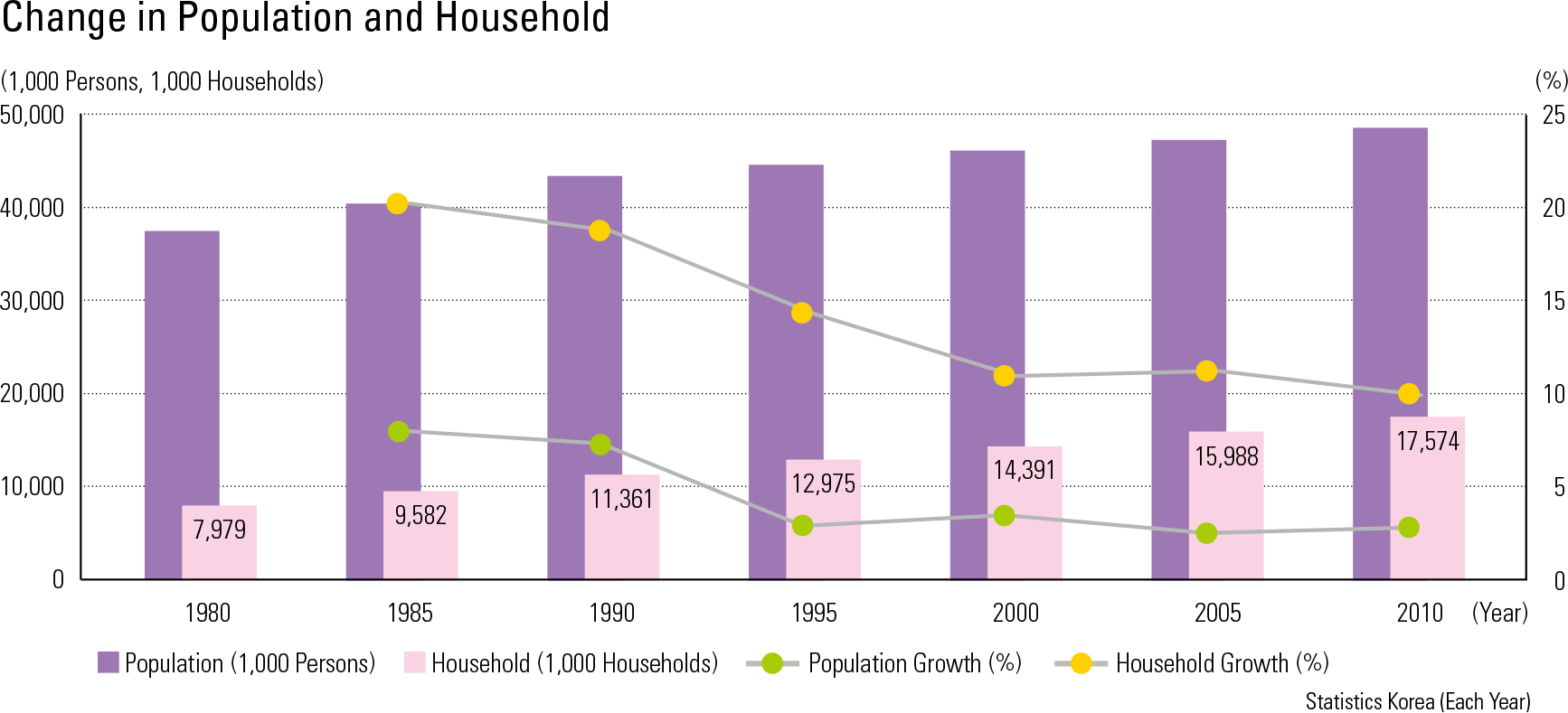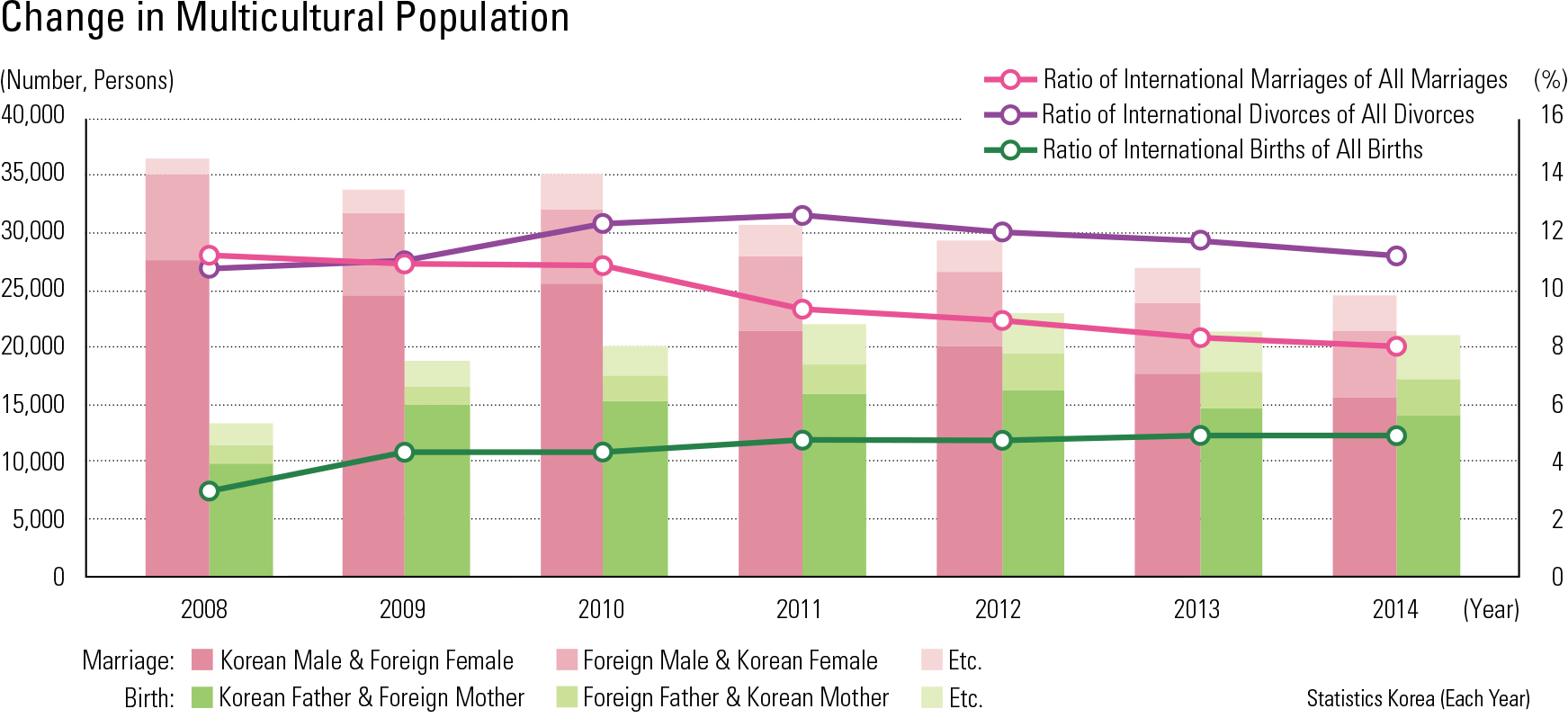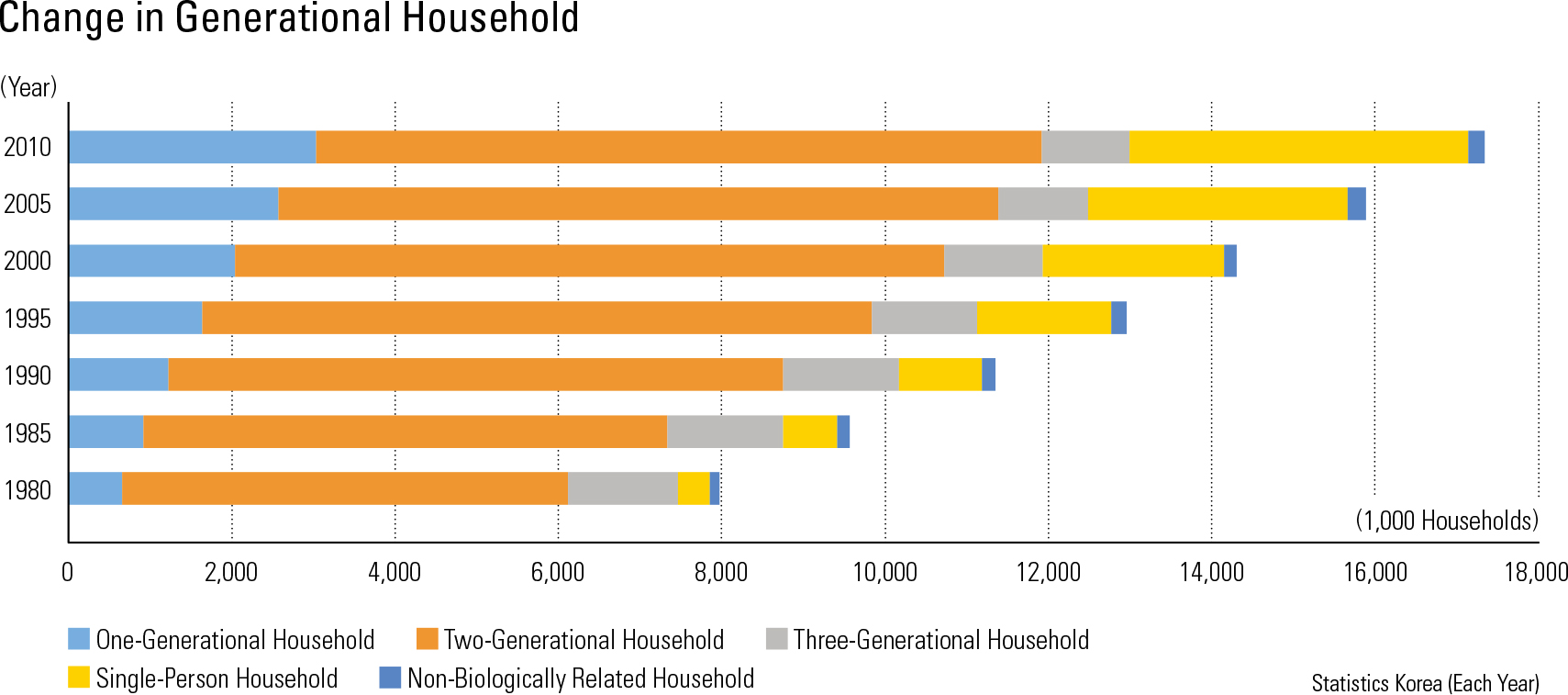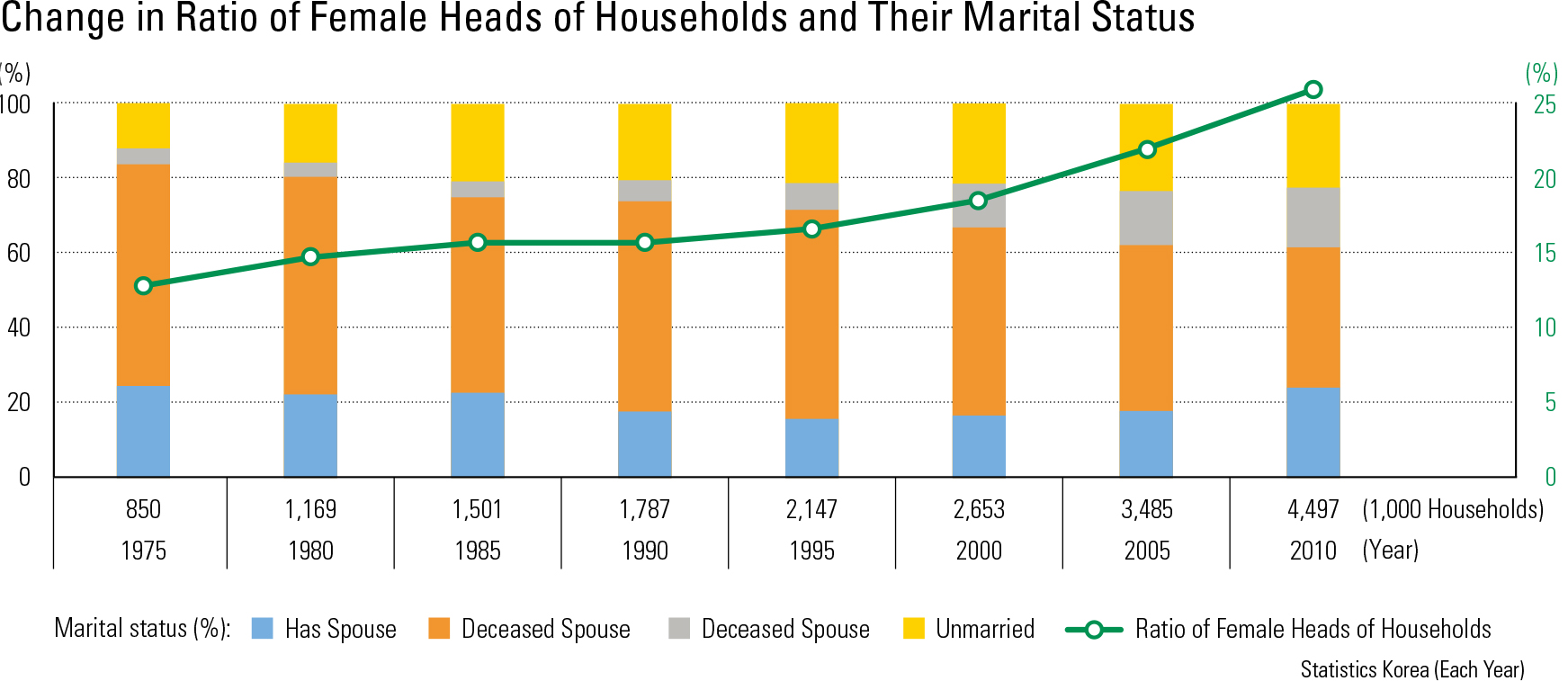English III
A household is a living unit of one or more people who share a dwelling. A household may include members who are not related by blood. Depending on the characteristics of the mem- bers, households are categorized into general households, collective households, and foreign households. General households include biologi- cally related households, non-biologically related households, and single-person households. The number of households in Korea increased from 15.99 million in 2005 to 17.57 million in 2010. This is an increase of 9.9% over the 5-year period. Between 1980 and 2010, the number of house- holds increased by 120.3% while the population increased by 29.8%. This re ects that family size in Korea decreased rapidly. Over a generation between 1980 and 2010, the share of biologically related households de- creased from 93.7% to 74.9%, while the number of single-person households and non-biologically related households increased. More specifical- ly, in 1980, the ratios of one-generational and two-generational households were 8.3% and 68.5%, respectively, and the ratio of single-person households was only 4.8%. In 2010, the ratios of one-generational and two-generational house- holds were 17.5% and 51.3%, respectively, and the ratio of single-person households jumped to 23.9%. This demonstrates that the main trend in household composition is the increase in one-gen- erational and single-person households. Korea’s key demographic trends can be contex- tualized through the perspectives of multicultural- ism, societal values, and an aging population. First, international marriages and workforce migrations are leading to an increase in the number of multi- cultural households. A multicultural household is de ned as a household that has one or more mem- bers who are either foreign nationals or who have obtained Korean citizenship by means other than birth such as marriage immigration and natural- ization. It also includes foreign households whose members are all foreign nationals. Summarized below are statistics related to an increasingly multicultural population, reflected in the number of marriages, divorces, births, and deaths. The number of international marriages peaked in 2008 with 37,000, which is 11.2% of all marriages, and has decreased since then. In 2014, the number was 24,000 (8.0% of all mar- riages). In 2014, “Korean male & foreign female” marriages comprised 63.6%, while “foreign male & Korean female” comprised 24.1%, and the remaining 12.3% belonged to the “other” cat- egory. Compared to 2008, the ratio of “Korean male & foreign female” is decreasing. In 2014, the number of divorces in marriages with foreign spouses was approximately 13,000 (11.2% of all divorces). The ratio of births from multicultural households increased from approximately 13,000 (2.9% of all births) in 2008 to 21,000 (4.9% of all births) in 2014. In 2014, the ratio of births from a “Korean father and foreign mother” couple was 67.1% of the total, while it was 14.9% from “for- eign father and Korean mother.” The remaining 18.0% belonged to the “other” category. As families are separated and the number of single-person households is increasing, social val- ues have evolved. The key indicator that shows the changing household structure is the ratio of female heads of households. A female head of household may refer to a household without a male spouse (i.e., unmarried, widowed, divorced), or a household where a female is responsible for supporting the family. The ratio of female heads of households increased from 12.8% in 1975 to 25.9% in 2010, and continues to increase. The marital status of female heads of households is 37.7% “widowed,” followed by “married,” “un- married,” and “divorced.” The main reasons for the increase of the number of female heads of households are the increase of elderly females with longer female life expectancy and the in- crease of divorced or unmarried females. Korea’s population is aging at the fastest pace in the world due to a plummeting birth rate and extended life expectancy. The key indicators of the aging population are the aging index and the elder- ly dependency ratio. The aging index is de ned as the ratio of the population over 65 per 100 youths under age of 15, while the elderly dependency ratio is de ned as “population aged 65 and over” divided by the working population aged 15 to 64. Korea’s aging index increased from 6.9 in 1960 to 68.4 in 2010. The index is projected to reach 394 by the year 2060. The elderly dependency ratio increased from 5.3 in 1960 to 15.2 in 2010, and is projected to reach 80.6 by the year 2060.
page_2 |



